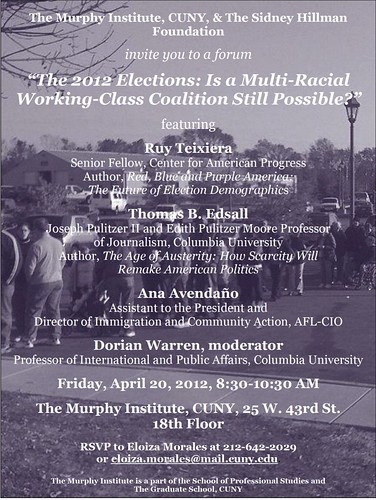
NEW YORK - Musician and activist Tom Morello will receive a special public service award at the annual 2012 Hillman Prizes ceremony on May 1 at The TimesCenter. The Board of Directors of the Sidney Hillman Foundation is honoring Morello with the Officers’ Award for his advocacy for and support of working people across the world.
Morello will receive the award at the ceremony and reception to honor this year’s Hillman Prize-winners for excellence in journalism in service of the common good. Previous Officers’ awards have gone to such figures as Eleanor Roosevelt, Senator Edward M. Kennedy, Martin Luther King Jr., Harry Belafonte, and others.
Morello will be performing at this year’s ceremony.
In 2011, Tom Morello sang on the capitol steps in Madison, Wisconsin to support the public employees in their fight to protect collective bargaining. He visited and performed at Occupy Wall Street protests in New York, Los Angeles, San Francisco, Seattle and Vancouver. He donated the proceeds from his Justice Tour concerts in Madison WI, Flint MI, and Cleveland OH to the Nation Institute.
“Tom Morello’s work in pursuing social and economic justice - and in telling the stories of working men and women - is exemplary and inspiring,” said Bruce Raynor, president of the Sidney Hillman Foundation. “Tom’s music, energy and leadership brings attention to causes that matter and inspires others to become more active on the public commons. In the words of another American songwriter, there’s a battle outside and it’s ragin’ - and almost any time we look, there’s Tom Morello right out in front.”
The awards ceremony will take place at 6pm Tuesday, May 1, 212, at The TimesCenter, in New York City.








